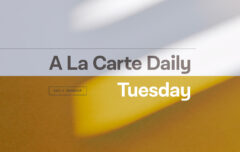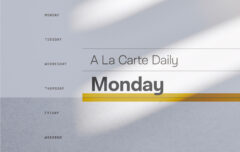Today I am posting something rare–a guest post. This article was written by John Ensor, whom you may know as the author of The Great Work of the Gospel and Doing Things Right in Matters of the Heart. In this article he takes on what he considers a popular Palm Sunday myth. Read it and let me know what you think. Is he right? Were the crowds really as fickle as we often think? Or have we got this all wrong?
It is a theological myth that gets restated every Palm Sunday. I heard it again this past week and it grieves my spirit deeply; that the cheering crowd that lauded Jesus with sweet “Hosannas,” later cried “Crucify him!” Such is the fickle nature of man it is said.
I say it is not true. The people were not fickle. Apart from the fact that the word “crowd” is used in both contexts, there is no evidence to assert that it is the same crowd and lots of evidence that it is not. The evidence suggests that the crowd shouting “Crucify him!” was a crowd of chief priests, scribes, elders, Pharisees, Sadducees and “conscripted” false witnesses (by threat or bribe most likely).
Using Matthew’s gospel, the crowd shouting “Blessed is he who comes in the name of the Lord!” (21:9) are referred to collectively as the “daughter of Zion” (21:5) and later referred to simply as “the people” (26:5). They are the regular, average citizens, the “folks” as opposed to the power-protecting religious leaders. The people perceived that someone great and glorious, in deed, heaven-sent, was arriving. They burst forth with due praise. Included in this crowd were children who continued shouting “Hosanna to the Son of David” when he arrived at the temple (21:15). The sick, blind and the lame were also part of this crowd and they too followed Jesus to the temple (21:14). They believed that Jesus could heal them. They were not disappointed (21:14). Before we say that this crowd turned on him, we ought to check. Most likely they neither understood his fullness nor his purpose. Not even his disciples grasped that. But they at least understood him as “a prophet sent from God” (21:11). There is no evidence that these people, just a week later, screamed and rioted in demand of his execution.
But even before I trace this out in the gospels, I submit that people, in general, are not fickle like this. They do not swing from rapid popular acclaim to hatred in a few days for no reason other than that they are fickle in nature. People generally change their opinion about leaders, from initial great enthusiasm to deep disappointment and bitterness slowly, over time (months and years), based on the disappointing actions of those leaders; not group “mood swings.” We do well to remember Psalm 146:3 when watching cheering crowds swoon before any political leader. “Put not your trust in princes, in a son of man, in whom there is no salvation.” All people, being sinners, make horrible Saviors, spiritual, political or otherwise.
That is why the Triumphal Entry of Christ is so great that the rocks were tempted to break the rules of nature (Lk 19:40). For this was the Son of Man arriving on a colt. Shout aloud! O Church! Or stand aside and let the trees clap their hands!
But even within this greater crowd of everyday people, the seeds of another crowd were present. “And some of the Pharisees were in the crowd” (Lk 19:39). They immediately attempted to suppress the glory, laud and honor to our redeemer King. But it could not be done. In fact, the children carried over the very praises they heard during this march to the temple when Jesus arrived there. The blind and the lame also showed up at the temple, hoping that this man sent from God might heal them. They were not disappointed. But the other crowd was also milling at the temple. “When the chief priests and the scribes saw the wonderful things [Jesus] did, and the children crying out in the temple, “Hosanna to the Son of David!” they were indignant” (21:15). They challenged Jesus to stop the crowd from acclaiming him. Jesus said their praise was only natural (21:16).
Next we read that “the chief priests and the elders” arrived at the temple and attempted to question Jesus’ authority (21:23). Their goal was to take him down a notch in the eyes of the people (who still loved him). Jesus returned their question with a question about John the Baptist: was he sent from God or was he a human invention? They were stuck. “If we say ‘From man’ we are afraid of the crowd, for they all hold that John was a prophet” (21:26). Here is confirmation that the crowd remained enthralled of Jesus and saw him in the same way they saw John the Baptist, as a prophet sent from God. The chief priests and elders left unsatisfied and growing in their anger.
Next we read in 21:45 that “the chief priest and the Pharisees” witnessed Jesus teaching parables. They wanted to arrest him, but “they feared the crowds” (21:46). This is the second reference about fearing the crowd. The problem they faced in bringing down Jesus was the continuing popularity of Jesus by the “folks.” They were not fickle. They were consistent. The religious elites needed to figure a way to break the popularity of Jesus in order to destroy him. .
Taxes are always a good wedge issue. In 22:15-16, we read that the Pharisees “plotted” to entrap Jesus into taking an unpopular position regarding taxes. They expected him to try to slip out of it so they began by praising his honestly and integrity. This would force him to speak in a way that would make the crowd think again about Jesus. “Teacher, we know that you are true and teach the way of God truthfully, and that you are not swayed by appearances. Tell us, then, what you think. Is it lawful to pay taxes to Caesar or not?” (21:16-17). It didn’t work, and his popularity with the crowd of regular folk only intensified, even as the other crowd’s anger deepened (21:22).
Next the Sadducees took a turn (22:23-8). They raised a disputatious matter of theology concerning resurrection, trying to show the irrationality of it and thus peel off a chunk of his popularity by forcing Jesus to choose sides in a matter that divided the people already. Jesus’ answer did take a side (for resurrection!) and made a persuasive case of it as well. The result? “And when the crowd heard it, they were astonished at his teaching” (22:33).
Here we see the crowd of “folks” growing in their joy over Christ, not diminishing; and certainly not fickle. But the crowd of leaders opposing him was also growing. The Pharisees and the Sadducees joined together to thwart a common enemy (22:34). This crowd plotted and planned. Meanwhile, we read, “Then Jesus said to the crowds and to the disciples, “The scribes and the Pharisees sit on Moses’ seat, so practice and observe whatever they tell you- but not what they do” (23:1-3). Jesus is teaching and building up the faith of the “folks”. Here he is warning them to follow the teaching of the law, but not the lifestyle of the teachers (the scribes, Pharisees, elders, priests etc.). Are we to believe that those who lauded Jesus’ arrival, and witnessed his healing power, and who were taught parables about the Messiah’s reception and were explicitly warned not to follow the behavior of the religious elites were not impacted by it in any way and subject to fickleness of allegiance? (If we do, then it is worse than the myth says. For the fickleness must have erupted not over a week, but over a few days.) Or should we acknowledge that this crowd continued to hunger to be in Jesus’ presence in the days that followed his entry, and deepened their hope in him throughout the week, as they were taught by him? This crowd’s open embrace of Jesus was growing and it served as his protection from the growing crowd of plotters.
In 26:3-4 we read that the chief priests and elders gathered together and “plotted together in order to arrest Jesus by stealth and kill him.” Why the stealth? Because this crowd of plotters feared upsetting the other crowd of folks. Since their attempts to turn the crowd’s opinion against Jesus failed, their only option was to go around the crowd. We may be sure of this because 26:4-5 makes it explicit. “[They] plotted together in order to arrest Jesus by stealth and kill him. But they said, ‘Not during the feast, lest there be an uproar among the people.” Praise God, the people, the same people who cried “hosanna!” a week before, were still standing firm even at this last hour!
And so the plot unfolded at night and throughout the night, when the people were largely asleep and unaware of the unfolding events. By the time they awoke the next morning, the arrest and trial was done. Jesus was crucified at 9 AM (Mk 15:25) ―before the crowd would have come looking for Jesus to see and learn more as was their daily habit now, or react defensively on his behalf, or to provide their own testimony of his healings and teachings, the deed was done.
It began, according to Mt 26:47 when Judas arrived and “with him a great crowd with swords and clubs, from the chief priests and the elders of the people.” This is the crowd that would push for crucifixion-a crowd consisting of chief priests and elders and their cronies, armed with clubs. They expected that those gathered around Jesus would fight to defend him (they suffered from sleepiness; but not fickleness). At least one rose up fighting and cut off the ear of one of the chief priests. Jesus heals him. “At that hour, Jesus said to the crowds, ‘Have you come out as against a robber…” (26:55). Again the evidence is building that two crowds are at work here: one that was growing more passionate in their intent to murder Jesus and one growing more determined to defend him. Fickleness is not in the picture.
Continuing on, the crowd of high priests and elders took Jesus to Caiaphas, another high priest, where still more of their kind had assembled; “where the scribes and the elders had gathered” (26:57). This group is now called “the whole Council,” or the Sanhedrin (26:59) and they sought out “false testimony against Jesus that they might put him to death” (26:60). It is possible that they sought these out from among the healed or from the people in general. But this would be reading into the text. More likely they sought these ought from among the chief priests, elders, scribes, Sadducees, and Pharisees that had tracked him all week and grew blood thirsty with each passing day. What is clear is that there is still no sign of fickleness here.
In the early hours of the morning, this same crowd of “chief priests and elders of the people” (27:1), led Jesus to the governor, Pilate. Again in 27:12, it is this crowd of chief priests and elders who accused him before Pilot. It was before this same crowd that Pilate looks for a way out. “Now at the feast the governor was accustomed to release for the crowd any one prisoner whom they wanted” (27:15). This makes sense, politically. Pilate benefited by appeasing this crowd of religious leaders from time to time. He did not need to curry support from the children, the lame, the blind, and the every day folks of Jerusalem. And it was this crowd that finally got what they had wanted since Jesus first arrived on a donkey; they found a way to kill him.
When we read in 27:20, “Now the chief priests and the elders persuaded the crowd to ask for Barabbas and destroy Jesus.” All the indications are that this refers to the crowd of fellow elders, priests, scribes, and Pharisees that the narrative indicates had been gathering and assembling and moving about all night. “They all said, ‘Let him be crucified!’” (27:22). Still Pilate was reluctant. But this crowd knew they had their man cornered. Just a little protest now was all that was needed. They screamed, shouted, threatened, perhaps ripped their clothes or threw a few chairs. Hard to know. But whatever it was, it equaled the first stages of social unrest. Pilate saw “that a riot was beginning” (27:24). He was now left with little choice but to slake their thirst for the blood of Jesus and thus purchase his own peace with this crowd.
It was morning now and people were out and about. This same crowd conscripted a by-stander, Simon, a Cyrene, to carry his cross (27:32). By noon, other bystanders were around watching. Hearing Jesus’ cries, they said, “Truly this man is calling Elijah.” They were confused. But they were never fickle. They still believed that Jesus was sent from God and even at this final hour, expected God to come to his defense (27:49).
So let the joyous news be spread! The crowd was not fickle. And did not praise him one day and cry out for his murder another. Two crowds were coming and going all week. Both grew stronger in their conviction as the week went along. The sheep grew sheepier. And the goats grew goatier. The later group conspired to work around the former. Later on, Peter referred to this group as “lawless men” (Acts 2:23). This better fits the crowd of chief priests, scribes, elders, Pharisees, who could act against the law and above the law, and get away with it. Regular folk lack such power in general.
So let us join in the singing; and stand with the blind, the lame, the disciples, the children, the Cyrene, the women who later stood at a distance and look bewildered at the cross, and the general populace, who at this moment saw the truth, at least in part. “All glory laud and honor to thee, Redeemer King. To whom the lips of children make sweet hosannas ring.” Sing with them and do not diminish their child-like faith with talk of fickleness.
John Ensor is the Executive Director of Urban Initiatives for Heartbeat International and author of “The Great Work of the Gospel” (Crossway, 2006).









